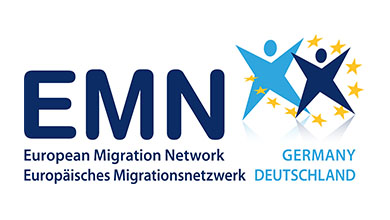EMN Study: Data management in the asylum procedure , , EU-wide comparative report of the European Migration Network on 25 European countries

This EMN Study reflects the situation and developments in asylum data management between 2014 and 2020 in the EU Member States and Norway. The impact of the COVID-19 pandemic on data management in the asylum procedure is also briefly highlighted.
Data collection in the Member States
Most Member States have adopted a decentralised system where more than one authority is involved in data collection and processing at each stage of the asylum procedure. However, some Member States and Norway follow a more centralised system where only one authority is responsible for each stage of the asylum procedure.
Although there are some differences in the type of data collected across the EU, some categories of data are collected by all or at least most Member States. For example, all Member States collect data on the asylum seeker's current name, contact details, health data and biometric data (including photo and fingerprints). Data on education and family members already in the Member States are also collected by most Member States. In addition, there is a trend to frontloading the collection of certain data from asylum seekers, including in particular name, biometric data, place of birth and supporting documents (e.g. passport and travel documents).
Data storage and data sharing
Data management in the asylum procedure is becoming increasingly digitalised. Information from asylum seekers is mainly collected through oral interviews and questionnaires, as well as through electronic tools for biometric data. However, some Member States and Norway are also using new methods and technologies to collect data on asylum seekers (e.g. social media analysis, mobile device analysis and artificial intelligence).
In most cases, data on asylum seekers stored in databases can be accessed by the different authorities involved in the asylum procedure. In several Member States and Norway, access to certain databases or specific data is sometimes also granted to actors outside the asylum procedure (e.g. health authorities, employment agencies, security authorities) for purposes other than the asylum procedure.
Data protection and data quality
Most Member States provide asylum seekers with a data protection notice containing information on personal data collected and processed in the asylum procedure. The data protection notice is mostly provided in writing and/or orally, although some Member States and Norway also provide it digitally.
The vast majority of Member States check the quality of the data collected during the asylum procedure for accuracy, timeliness, completeness and consistency. These quality checks are mostly carried out from the beginning of the asylum procedure. National competent authorities use a wide range of quality control tools and methods to assess the quality of data processed during the asylum procedure (e.g. automatic quality checks, carrying out data comparisons between different data sets).
Challenges and best practices
Since 2014, the majority of Member States have experienced a number of challenges related to data management in the asylum system. The most common challenges relate to the lack of human or financial resources and the interoperability of databases (i.e. the matching of personal data between databases managed by different authorities, the mixed use of paper and electronic files, and interoperability with European databases).
Several Member States have responded to the challenges by introducing changes to data management in the asylum procedure. Most of these changes relate to the digitisation of data management, the adequate implementation of the General Data Protection Regulation (GDPR) and the reorganisation of databases (e.g. introduction of new databases or changes to the existing ones).
The EMN Study is available in English only. The German EMN study as well as a short version of the findings on EU level may be found in the EMN Inform and the EMN Flash. The EMN Inform and the EMN Flash are available in German and English (see "Downloads" under "Further information").

